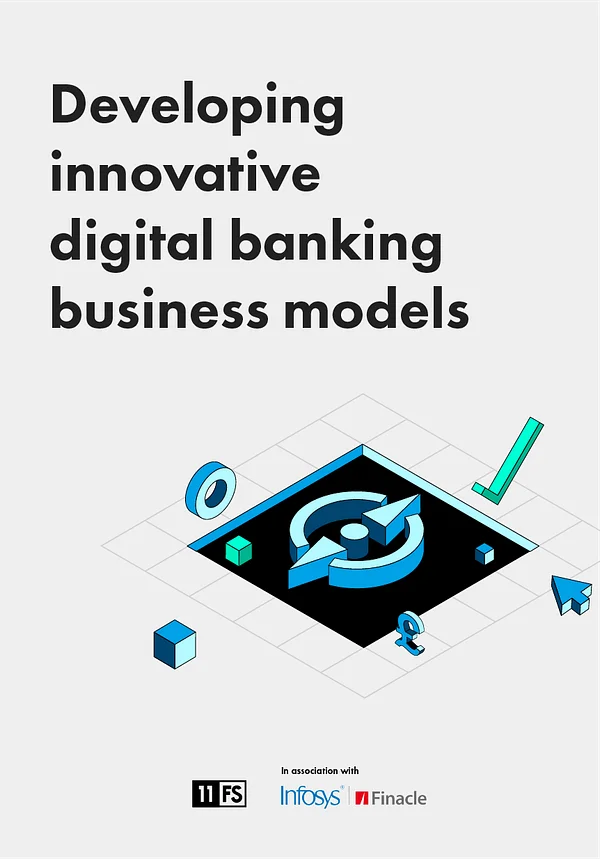By Michael Douglas, Vice President, Strategy, Galileo
The number of US-based neobanks has exploded in recent years. And they’re on fire in this era of COVID, with new account openings at record levels and investment continuing to pour into those with proven business models.
Today, one in five Americans over the age of 18 has a relationship with a neobank - businesses that aren’t banks at all but provide all-digital access to a “real” bank account, along with features and a UX specifically geared to their customers’ sensibilities. That’s pretty amazing for a category of financial services providers that barely existed 10 years ago. What’s even more amazing is that at least one expert predicts the number of Americans using neobank services will increase to nearly 50% by mid-decade.
As the Banking as a Service (BaaS) payment platform supporting more than 95% of neobanks in the US, Galileo has a front row seat to the neobank revolution. So I’d like to share some thoughts on the success of neobanks and how BaaS serves as the foundation of US neobanking.
Why does the US need neobanks?
The rise of neobanks proves the point that Bill Gates made back in 1997: Consumers need banking, but they don’t need banks.
Neobanks have stepped in to fill a void that traditional banks have left wide open—low-cost banking services with low or no-minimum deposit requirements and features that speak to consumers’ needs, along with an incredible UI/UX experience and the convenience of never having to set foot in a branch.
Among the best known and most successful neobanks in the US are Galileo clients Chime, Current, Dave, Greenlight, MoneyLion and SoFi. Each offers pricing and features geared to its target audience, such as early access to direct deposit payroll, credit building, debt management, investing and capabilities to thoughtfully introduce personal financial management to young people.
The distinguishing characteristic of these neobanks is placing customers at the center of their business model, with all decisions flowing from that customer-centric perspective. Case in point: in the recent effort to distribute government-funded COVID-19 stimulus payments to US consumers, Chime put $1 billion in stimulus payments in the hands of its customers before most banks had even posted their stimulus checks.
The distinguishing characteristic of neobanks is placing customers at the center of their business model.
Why can’t big traditional banks offer the same services as neobanks?
They’ve certainly tried, and a number of them have failed. The difference, it seems, is that neobanks’ uncompromising focus on customers is baked into their DNA, whereas traditional banks may have other priorities.
Traditional banks’ legacy systems play a part, too. Banks are often confined by their own big box operating systems (or those of their core processor) and don’t have the ability to use APIs to innovate quickly. Of course, all banks and their processors use APIs, but their systems typically aren’t built from the ground up with APIs at their heart.
This makes a huge difference in banks’ nimbleness; the features they can offer; their speed to market with innovation; and UI/UX design, including reducing transaction friction for consumers. Plus, many individuals—especially young people, those in lower socioeconomic brackets and immigrants—have a cultural aversion to banks.
Will neobanks replace traditional banks?
Traditional banks aren’t going away in the US, although we’ve witnessed a significant drop in their numbers, mostly attributable to consolidation. There are now about 5,000 FDIC-insured financial institutions in the US, down from 8,300 in 2000. And the number of new bank openings has slowed considerably from pre-2000 levels.
But traditional banks are the backbone of the economy, and they perform many essential roles that other entities can’t (given US regulatory requirements). Plus, let’s not forget, traditional banks provide the regulatory infrastructure and oversight that enable neobanks to do what they do. And let’s not forget that many who bank with neobanks maintain relationships with traditional banks, too.
Although neobanks won’t put traditional banks out of business, they’re nibbling away at their market share.
Today, traditional banks might not be overly concerned about the loss of that market share or—perhaps, more accurately—the opportunity to expand market share by attracting customers who choose neobanks. A case could even be made that banks welcome neobanks’ efforts to serve certain populations—such as unbanked and underbanked individuals, students, millennials, freelancers, those with bad credit scores, etc.—which they view as unprofitable or only marginally profitable.
Looking forward, it’s inevitable that neobanks will move into higher margin services, particularly lending, to accelerate profitability. With large and loyal followings, neobanks can expect strong uptake for these services. And when that happens, traditional banks might start caring more about the loss of market share opportunity. It’s not unreasonable to expect traditional banks to view neobanks as prime acquisition targets to acquire those relationships. Should this happen, will banks change the nature of the neobanks they acquire, destroying the attributes that made them attractive to consumers?
Will neobanks become “real” banks?
In the US, you’re either a bank or you’re not. There’s no pseudo bank charter for organisations like neobanks.
So, some neobanks will choose to pursue bank charters and some won’t. The first US neobank to qualify for a bank charter is Varo Money, which spent years and reportedly millions of dollars in this effort and faced several rejections along the way. SoFi, Galileo’s parent organization, is also pursuing a bank charter, as are the US arm of UK-based neobank Monzo and other fintechs such as Square.
There are compelling cases to be made on both sides, and the decision to pursue a bank charter must be based on individual circumstances, including the economic viability of doing so and, ultimately, where the neobank wants to go. But the fact remains that obtaining a bank charter is expensive and time-consuming and diverts a neobank’s attention from its primary short-term goal of customer acquisition. Not every neobank will be willing to make that sacrifice.
Why is BaaS important to US neobanking?
This brings us back to BaaS, which underpins neobanking and powers its success.
BaaS platforms, such as Galileo’s, connect neobanks to their sponsoring banks via application programming interfaces (APIs) that enable them to build their financial services on top of the banks’ regulated infrastructure.
Neobanks also use the BaaS platform’s APIs to fulfill customer-initiated onboarding, account funding and other banking activities. In the case of Galileo specifically, BaaS also enables neobanks to connect to other third parties to complete their solutions, such as payment networks, like Visa or Mastercard; ATM and point-of-sale networks; specialty service providers, like bill pay companies and card manufacturers.
The modularity and flexibility of BaaS platforms, along with their ability to handle the extensive back-office requirements of running bank-like services, free neobanks up to focus on satisfying their customers.
It’s hardly a stretch to say that without BaaS platforms, neobanks wouldn’t exist and couldn’t support the flexibility and nimbleness that are hallmarks of their success.
What’s next?
In the US, neobanks are now part of the financial services mainstream.
They’ve proven their ability to meet consumers’ needs in ways that banks can’t or won’t.
And there’s still significant runway for the introduction of additional neobanks with laser-like focus on meeting the needs of specific consumer - and even business - segments.
In the near future, however, successful neobanks will augment their current focus on customer acquisition with the goal of achieving profitability. To achieve this, they’ll look to their BaaS platforms to go beyond debit and deposit-based capabilities with functionality to support higher-margin lending and wealth management services, enabling them to meet all their customers’ financial needs—saving, spending, borrowing and investing.
It’s incumbent on BaaS providers not only to keep pace with the growing needs of neobanks but to anticipate those needs with solutions enabling them to broaden their business models. This is at the forefront of Galileo’s strategic roadmap, and we’re actively preparing our platform to support our current and future neobank clients to expand seamlessly into new categories. As always, we’re doing the heavy lifting so our neobank clients can continue their unrelenting focus on getting it right for their customers.
About Galileo
Galileo, the API standard for card issuing, virtual card solutions and digital banking, is a global payments platform that powers world-leading fintechs, neobanks, financial services and investment firms by removing the complexity from payments. Galileo makes it fast and easy for many types and sizes of businesses to innovate and deliver amazing financial services user experiences to their customers through our Galileo Pro and Galileo Instant Solutions. Headquartered in Salt Lake City, Galileo has offices in Mexico City, New York City and San Francisco.
© Copyright 2020 Galileo Financial Technologies, LLC





.svg)
.svg)






